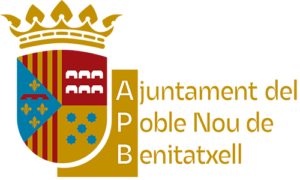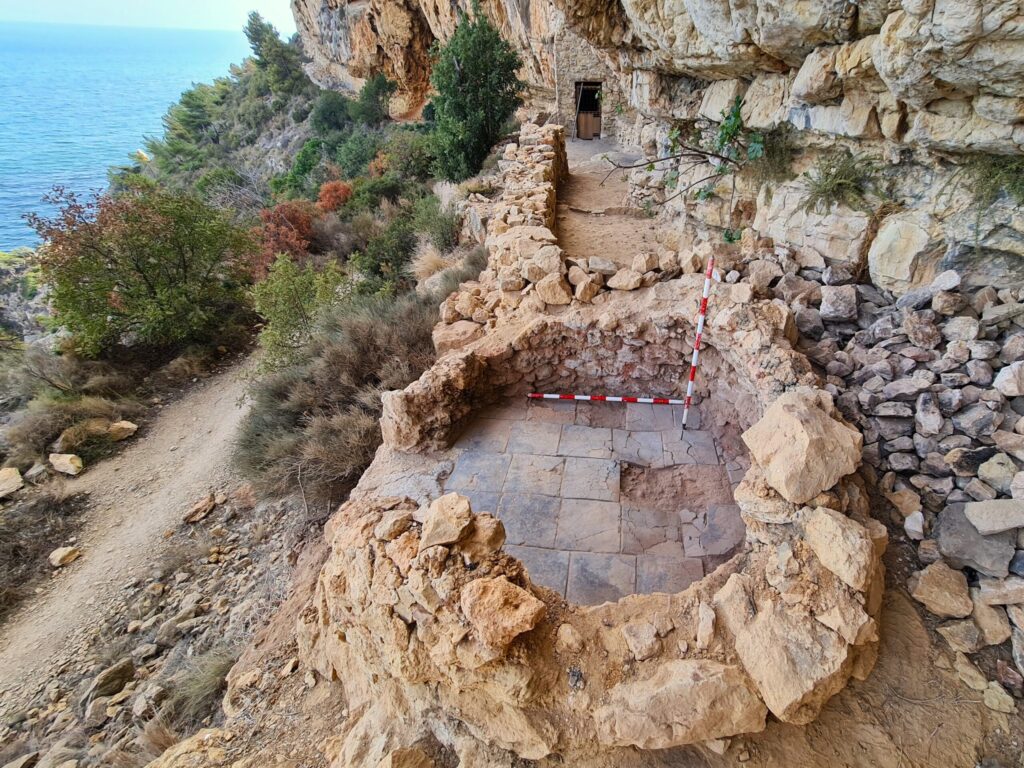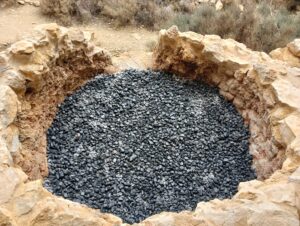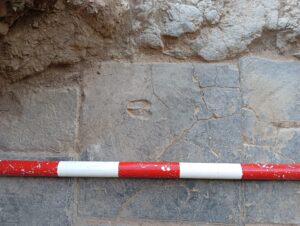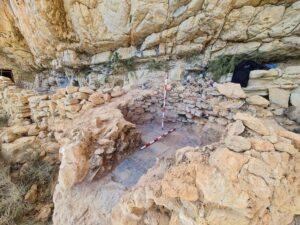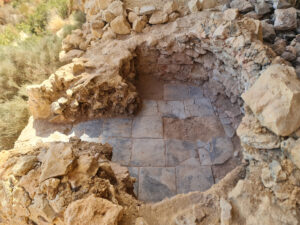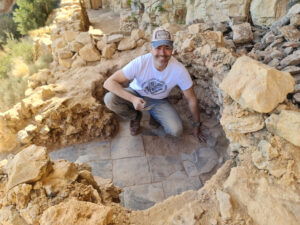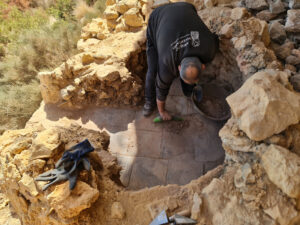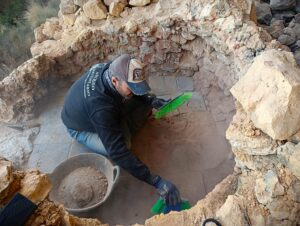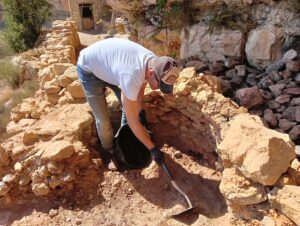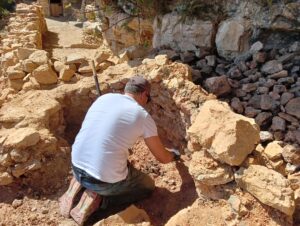- After the excavation, some striking gray baked clay tiles came to light, one of them with the footprint of a goat.
- Due to its large dimensions, it is believed that the oven would have been used not only to provide service to the owner of the Cova de les Morretes, but to all the caves in the cliffs.
The Poble Nou de Benitatxell continues to recover its heritage. The archaeologists in charge of the local Heritage and Archeology office have restored the oven of the Cova de les Morretes, the first of the four caves located on the Cliffs route that served as a refuge for people of humble status who were dedicated to fishing. and to the exploitation of the surrounding terraces.
Among the works carried out, all of them manually, the cleaning, restoration and consolidation of the structure of the oven stands out, which was in very poor condition. It was partially buried by a 1.2 meter stratum made up of earth and stones from the collapse of its dome.
After the excavation, some striking 28.5 cm gray baked clay tiles came to light that, according to experts, would provide relevant information about their origin. It is believed that they would be manufactured in one of the teuleries from Puig de la Llorença and that they would have been cooked with a reducing technique, hence their grayish color. “It was very surprising that when digging a pavement appeared, because we did not expect it. We expected perhaps a layer of sand or earth and salt, which was common here in the Benitatxell ovens,” said archaeologists from the local office, Humberto García and Alejandro Gomis.
One of the most notable curiosities is that a goat's footprint has appeared on one of the tiles. “When the clay tile was still tender, it was stepped on by the goat, leaving the imprint of its hoof. “The person who built the oven placed it right on the door of the oven.”
Although it has not been possible to determine what the oven was used for, the charred remains have revealed that the combustion was done with carob wood, typical of the area. In addition, archaeologists are surprised by its large dimensions. The oven measures 2 x 1.68 m inside, 2.40 x 2.10 m outside, and has a preserved height of 1.10 m and a probable height of 1.40 m when in use.
“It is not usual, since the cave had been used intermittently by a person who lived in the town and who moved there a few days a year to collect almonds and carob, and then make some black market deals with boats that "If they came from other places, it is not understandable that they would build such a large oven," they highlighted. Therefore, the conclusion they have reached is that the oven would have been used not only to provide service to the owner of the Cova de les Morretes, but to all the caves in the cliffs. This theory could also be supported by the fact that this is the only oven documented along the entire Penya-segats route.
The restoration work carried out
In more detail, the restorer Andrea Sanz, accompanied by archaeologists, has carried out the restitution and consolidation of the structure. For this, a traditional sand and lime mortar without additives has been used. After the excavation the walls have been consolidated, adding a sacrificial course, an upper structure to protect the original part of the oven from rain, vandalism, etc.
To protect the pavement, a protective layer of geotextile has been applied and then other layers of sand and dark gray gravel that would symbolize the color of the ashes from the oven and that of the tiles.
In addition, the intervention has been used to excavate a cave adjacent to the Cova de les Morretes. No human presence has been documented there, but there have been two small dens that would surely have been used for livestock, since two beds of straw and algae and some remains of goat excrement have been detected.
All the walls and structure of the Cova de les Morretes have also been cleaned and consolidated again and the area has been fenced with signs to temporarily prevent passage until the drying of the lime mortar is complete, which will guarantee the conservation of the structure.
All those who are interested in obtaining more detailed information about the work carried out in the Cova de les Morretes can consult the report of the excavation by going to the Municipal Library (Av. d'Alacant, 11).
